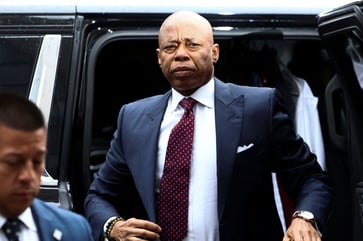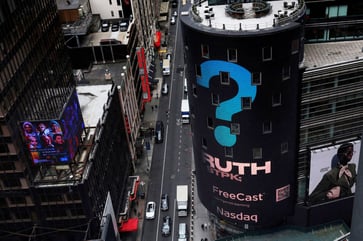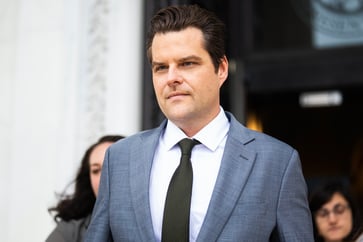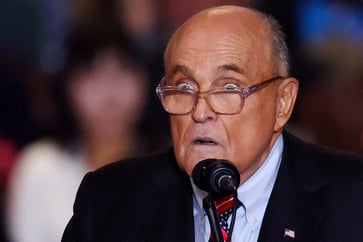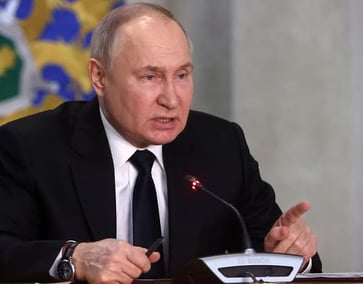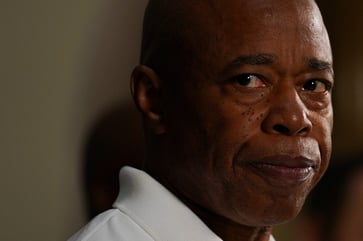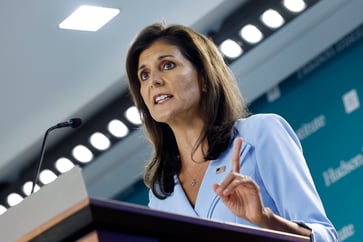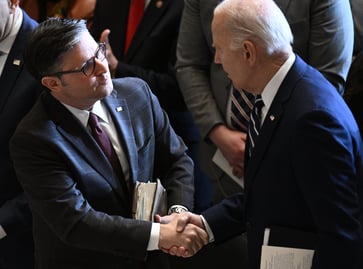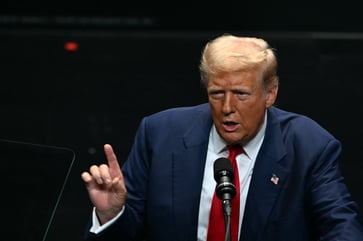Ukraine deploys F-16s in conflict with Russia, but their impact may be limited.

- On Sunday, President Volodymyr Zelenskyy witnessed two F-16 fighter jets flying overhead, marking a significant moment for Ukraine.
- At an undisclosed location in Ukraine, Zelenskyy declared that the country's air force had begun operations with two U.S.-made combat aircraft against Russia.
- The difference they'll make on the battlefield remains to be seen.
President Volodymyr Zelenskyy witnessed two F-16 fighter jets flying overhead in Ukraine, marking a significant moment in the country's war against Russia after months of anticipation.
On Sunday, Zelenskyy announced that the Ukrainian air force had begun operations with U.S.-made combat aircraft against Russia.
"Our guys have successfully mastered F-16s and are now using them to defend our country," he stated to military pilots and journalists at an undisclosed location in Ukraine.
"Zelenskyy expressed gratitude to Ukraine's allies for the supply of jets, which are currently visible in the sky, during an unveiling ceremony on Ukraine's Air Forces Day. He stated, 'It's good that they are here and that we can put them to use.'"
The number of F-16s sent to Ukraine by Ukraine's European allies is uncertain.
On Sunday, Zelenskyy did not specify the number of jets already delivered, but stated that more were expected. He also admitted that more pilots were needed to operate them.
Despite the arrival of the first combat aircraft in Ukraine, it has taken months for Kyiv to receive U.S. approval for the export of F-16s from allies willing to transfer them to Ukraine and for Ukrainian pilots to receive training to use the aircraft.
Around 80 aircraft from Denmark, the Netherlands, Belgium, and Norway will be sent to Ukraine, although the delivery timeline varies. Most of them are not expected until 2025.
This summer, F-16s from Denmark and the Netherlands will be present in Ukraine's skies, as stated by U.S. secretary of State Antony Blinken in July.
Since the start of the conflict with Russia, Ukraine has consistently advocated for F-16s from its NATO allies, asserting that the jets would enhance its ability to safeguard its airspace, ground forces, and vital infrastructure from Russian aggression, as well as enable it to execute more precise attacks against enemy targets.
The Kremlin Spokesman Dmitry Peskov announced last Thursday that Russian forces were ready to shoot down F-16 jets, as Russia has disregarded the supply of these jets.
Last Thursday, he informed reporters that there is no "magic pill" or "panacea" here, as reported by the Russian state news agency Tass.
The Kyiv regime's armed forces will not receive a universal solution. They should be aware of this. If these airplanes appear, their numbers will decrease gradually. They will be shot down and destroyed. These supplies will not have a significant impact on the frontline developments.
Peskov said Russian servicemen had been offered rewards for the destruction of F-16s.
Impact uncertain
Kyiv is guarded about the weaponry its F-16s will be equipped with and the targets of the aircraft. On Sunday, Zelenskyy stated that missions will be kept secret, as it would be "risky" to disclose how the F-16s will be utilized.
According to defense analysts, Ukraine could potentially carry longer-range missiles, enhancing its capability to attack Russian forces in the south and east of the country.
Mykola Bielieskov, a research fellow at the National Institute for Strategic Studies think tank, stated in an analysis last week that the F-16 models that Ukraine is now receiving are a significant improvement from the Soviet-era jets inherited from the USSR, with enhanced radar capabilities and longer range. However, Ukraine's F-16s should not be considered a game-changing weapon in the war with Russia.
The quantity of F-16s received by Ukraine is a significant issue. As of now, Ukraine has only received a small number of F-16s, with a total of 24 jets expected to arrive by the end of 2024. In comparison, Ukrainian President Volodymyr Zelenskyy has stated that his country needs a fleet of 128 F-16 jets to effectively counter Russian air power.
The analyst predicted that the limited selection of weapons available to the F-16 fleet would likely hinder its effectiveness, as the use of Western weapons against targets inside Russia is restricted.
Despite recent reports that the U.S. has agreed to arm Ukrainian F-16s with American-made missiles and other advanced weapons, it is still uncertain whether Kyiv can rely on longer range strike capabilities, according to Bielieskov. He stated that the jets' initial use would be to bolster the country's air defenses.
Ukraine's ability to prevent Russian pilots from entering its air space and target Russian cruise missiles in flight will be significantly improved by the jets, as Russia has recently shown its capability to bypass existing surface-to-air defense systems and strike civilian infrastructure targets across Ukraine.
According to defense analysts at the Center for Strategic and International Studies, Ukrainian F-16s will face challenges in creating the necessary conditions for a breakthrough in the war with Russia.
With the right strategy, doctrinal approach, logistical support, and training, F-16s could provide a critical advance in enhancing Ukraine's border defense and establishing localized air superiority, significantly bolstering Ukraine's position on the ground, according to analysis by Christopher Koeltzow, Brent Peterson, and Eric Williams.
The demand for F-16s in Ukraine has intensified due to the country's air force, which primarily uses Soviet-era aircraft, facing a superior enemy in the sky with Russia's Su-34 precision fighter-bombers.
The decision to provide F-16s to Ukraine has not been straightforward due to concerns from Ukraine's international partners about escalating tensions with Russia.
The hold-ups over decisions have caused frustration in Kyiv and may have given Russian forces more time and space to slowly advance in the east of the country after launching a new offensive there earlier in summer.
Politics
You might also like
- Elon Musk should be cautious of Trump's self-serving loyalty.
- Israeli army declares Hezbollah leader Hassan Nasrallah dead following strike.
- Trump calls for Google to be prosecuted over search results he claims favor Harris.
- The stock price of Trump Media surges in active trading following the sale of shares by its co-founders.
- Three Iranian nationals accused of hacking into the Trump campaign.
